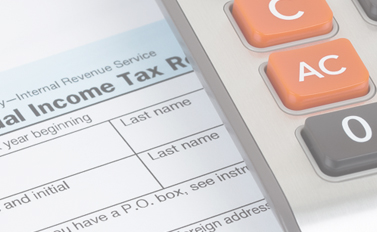
Did you know Brighton Center offers FREE Tax Preparation?
Our Volunteer Income Tax Assistance Program (VITA) assists with the preparation of tax returns through trained and certified volunteers for families with incomes of $66,000 or below.
You may be wondering how the partial government shutdown affects tax return season.
Here is what the IRS has confirmed as of today.
Tax return processing will begin on January 28th
The filing deadline is April 15, 2019
Tax refunds will be issued within 10 to 14 days once filed and approved except for individuals who qualify for the Earn Income Tax Credit (EITC).
EITC returns will be processed starting 2/15/19 and refunds are expected to be issued by 2/28/19.
2019 Tax Law Reform Major Changes - as provided by the IRS
The Tax Cuts and Jobs Act is the first major change to the American tax system in 30 years. Many of the new tax rules are expected to benefit taxpayers – especially in the early years of the act. Just how much your taxes will go down in 2019 depends on many factors, and your family situation will definitely impact how much (or how little) your refund will go up. Here is a list of the tax law changes affecting taxpayers with dependents in 2018. For additional tax law changes please go to www.IRS.gov.
1) Changes to the Child Tax Credit
If you took advantage of the child tax credit in 2017, you were able to claim a $1,000 credit on your income tax return for each child under 17 who qualified. For 2018, that deduction has doubled to $2,000 per qualifying child.
The child tax credit was nonrefundable before the Tax Reform. Now, the refundable portion is equal to 15% of your earned income over $2,500, up to $1,400. To estimate how much of the refund you would receive, you can use the following equation:
(Your salary - $2,500) x .15
In order for your child to qualify for the new credit, they must meet all of the requirements on the Child Tax Credit Test.
Child Tax Credit Test
- The child must be under age 17. More precisely, your child must have been 16 years or younger on the last day of 2018.
- The child must be related to you. This includes your son, daughter, stepchild, foster child, brother, sister, stepbrother, stepsister, your grandchild, niece or nephew, or legally adopted child.
- You must claim the child as a dependent on your federal tax return.
- The child must be a U.S. Citizen, U.S. National, or a U.S. resident alien with an SSN.
- The child must have lived with you for more than half of the tax year. Note: there are exceptions to the residency test, such as absences related to school, vacation, military service, and medical care.
- The child must not provide more than half of his or her own support.
The new child tax credit eventually phases out for married taxpayers filing jointly with an income of $400,000 ($200,000 for all other taxpayers).
2) A $500 Credit for Dependents Age 17-24
If your child does not qualify for the Child Tax Credit because they are over 17, they may still be eligible for a $500 credit under the new law. The credit also applies for dependents who are elderly or disabled.
3) Changes to the personal exemption and standard deduction
If you filed your taxes in 2018, you should have received a personal exemption of $4,050 for yourself and each of your dependents. Your personal exemption was subtracted from your taxable income in addition to your standard or itemized deductions.
The Tax Cuts and Jobs Act has eliminated this exemption, but it has increased the standard deduction to $24,000 for married filing joint, $12,000 if you are a single filer and $18,000 for Head of Household. For families with few children, this could be good news. But if you have several children or your dependents are over age 17, this could mean that more of your income is taxable. Fortunately, the tax law changes did lower income tax rates for most Americans. You can review the current Brackets at www.IRS.gov.
4) Restrictions to homeowner deductions
Homeowners especially will feel the effects of the new tax rules. If your family bought a home in 2018, you might be considering itemizing your deductions. In that case, be aware that under the new tax laws, the amount you can deduct for state and local tax deduction is now capped at $10,000. There are also limits to how much you can deduct for home mortgage interest and home equity loan interest. Learn more about the tax law changes specifically affecting homeowners here.
5) Changes to alimony deductions
This law won't take effect until Jan. 1, 2019, and it won't change at all for you if your divorce was finalized prior to Dec. 31, 2018. In other words, when you file your taxes for 2018, you will still be able to deduct alimony paid out. Likewise, if you are the recipient of alimony, you will need to include those payments in your taxable income for 2018.
If your divorce is finalized or you modify your alimony agreement on or after Jan. 1, 2019, then alimony payments cannot be deducted from the payer's taxable income for 2019. If you are the one receiving alimony, it should not be reported as part of your taxable income.
6) Expanding the 529 savings plan
For many parents, saving money to send kids to college is a priority - but nowadays, even putting your kids through kindergarten can get expensive! If you have been saving money for higher education, you probably chose the most tax-advantaged plan available to you. If you went with a 529 savings account, there are new advantages under the Tax Cuts and Jobs Act (TCJA). With the old tax laws, your 529 could only be used at eligible colleges and universities. Under the new TCJA, you can use your plan to cover up to $10,000 per year of qualifying expenses for any school and any grade from kindergarten through 12th as well. That includes public, private, and religious institutions.
7) Changes to the kiddie tax
The kiddie tax applies to children under age 19 and college students under age 24 who have unearned income over $2,100. Unearned income can mean dividends, capital gains or interest on investments. Following the tax law changes, qualifying income will be taxed at the rate for trusts and estates on the return you file in 2019. Those rates are:
Interest and Short-Term Capital Gains
Up to $2,550 = 10%
$2,550 - $9,150 = 24%
$9,150 - $12,500 = 35%
Over $12,500 = 37%
Long-Term Capital Gains and Dividends
Up to $2,600 = 0%
$2,600 - $12,700 = 15%
Over $12,700 = 20%
RS Withholding Calculator:
https://apps.irs.gov/app/withholdingcalculator/
(Verify your payroll withholding with this link)
For additional information please visit: www.IRS.gov
